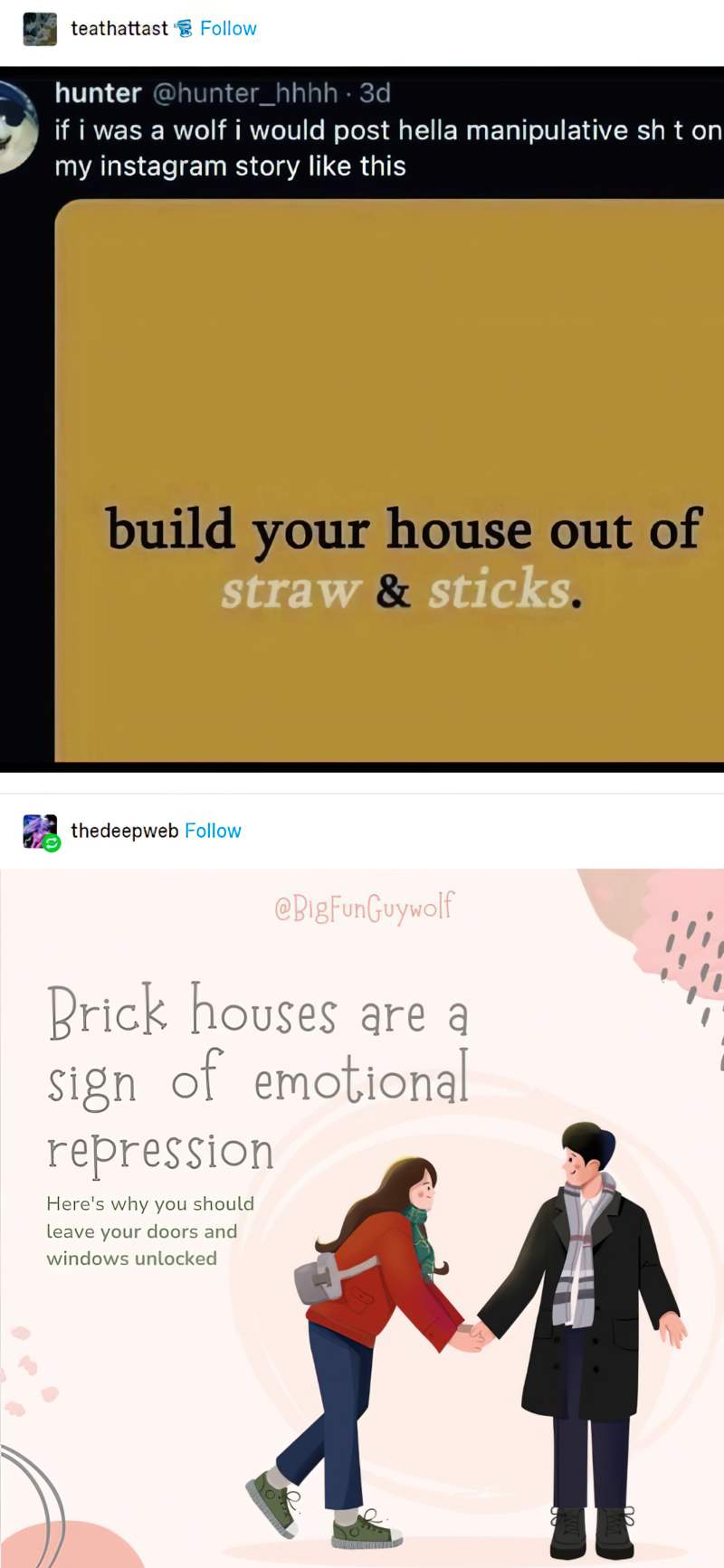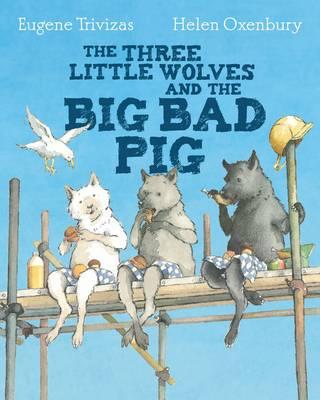The Three Little Wolves and the Big Bad Pigs is not only an inversion on the classic tale, but also a subversion of the message. Basically, this is a fable for a rape culture world.
PARATEXT
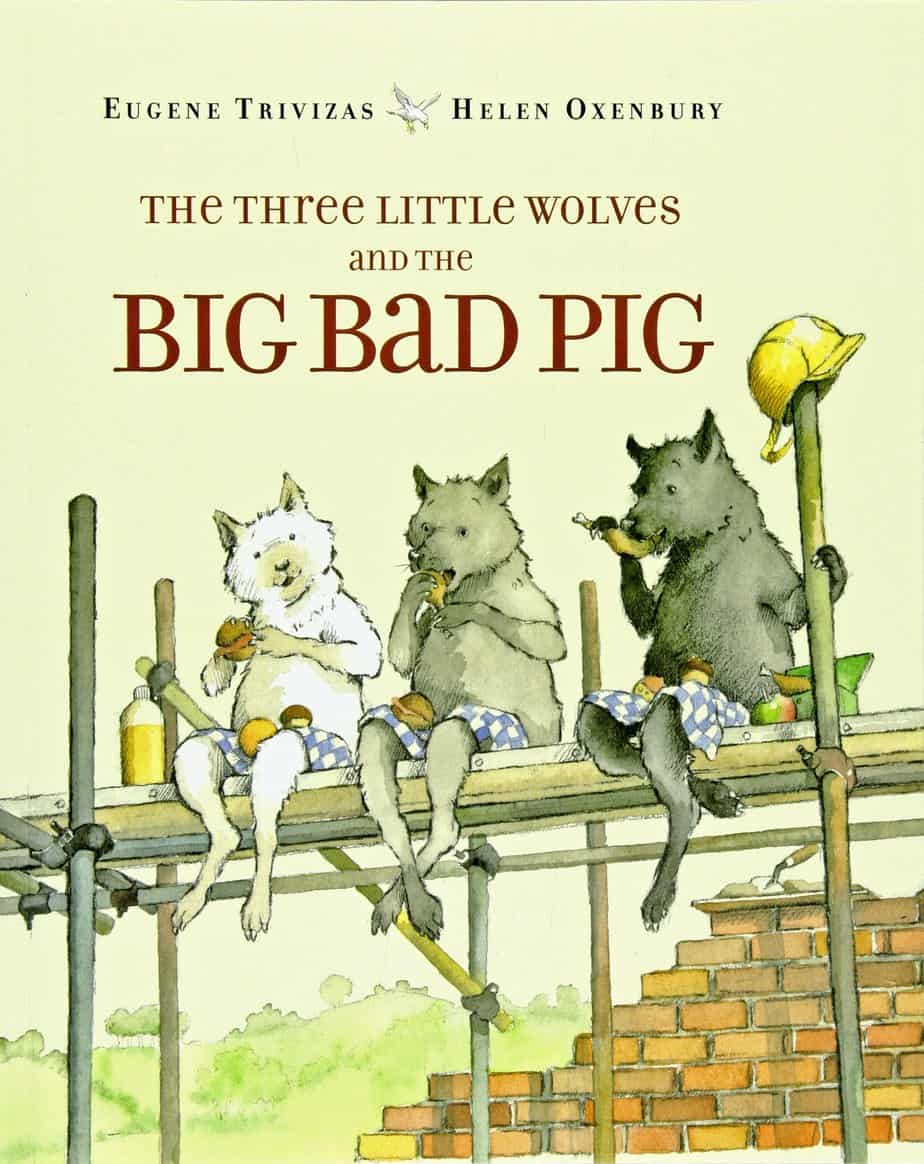
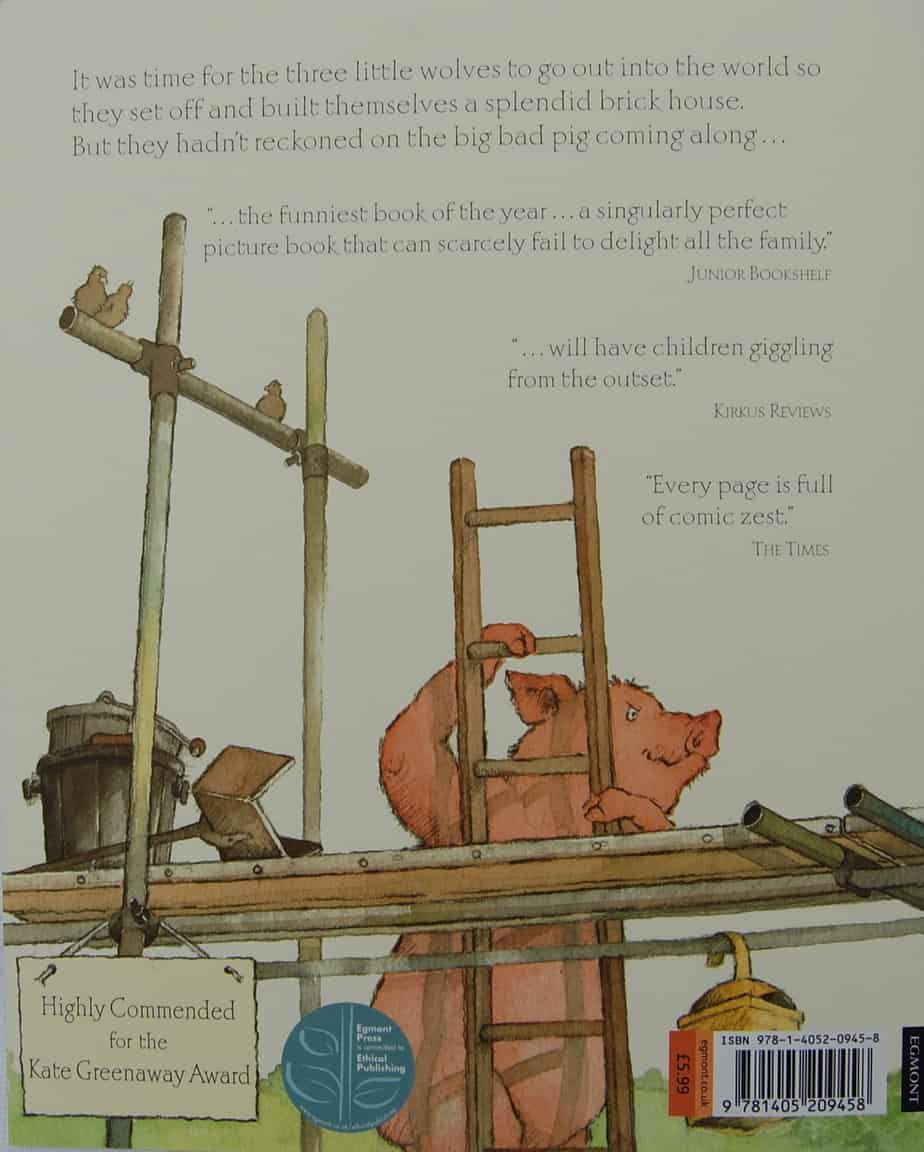
Back in 1993, this book was a best seller and did well in a number of big prizes.
Most of the picture books I’ve looked at closely have been written in English, but this one started off in Greek, written by a famous Greek children’s author who is also a sociologist:
Dr Trivizas has published many books on literature, and he is one of Greece’s leading writers for children. He has produced more than a hundred books, all of them currently in print, and he has received more than twenty national and international literary prizes and awards.
Wikipedia
The illustrations might remind you a little of the soft English countryside depicted by illustrators such as Beatrix Potter. Helen Oxenbury lives in North London and, like Trivizas, has a long list of books to her name. In 2008 she paired with our own Australian Mem Fox to create Ten Little Fingers And Ten Little Toes. Two years later she co-created There’s Going To Be A Baby with her husband, John Burningham.
WHAT I LOVE ABOUT THE THREE LITTLE WOLVES AND THE BIG, BAD PIGS
ORIGINALITY
At first glance The Three Little Wolves and the Big Bad Pigs looks easy to take a classic tale and invert the goodies and the baddies. However, nothing interesting comes of this. The author/illustrator have to be just as inventive as anyone creating a tale from scratch. What Trivizas did here was:
- He not only swapped the roles of the animals, he inverted the order of the classic story. In the original, it takes the first two silly little pigs quite a while to realise they should be living in a house of bricks rather than of straw or sticks.
- But Trivizas surprises us early on by having the smart little wolves build their house out of bricks. Where could the story possibly go from here?
- As we find out, the ‘big bad pig wasn’t big and bad for nothing’, and as the little wolves build each successive abode more ridiculously strong than the one before (keeping to the rule of three), the big pig makes use of modern technologies (a pneumatic drill) and dynamite to ‘blow’ the house down. The detail of the pneumatic drill is great — there’s nothing going down a level of specificity to get a laugh. (We see comparatively little manual labour in children’s stories.)
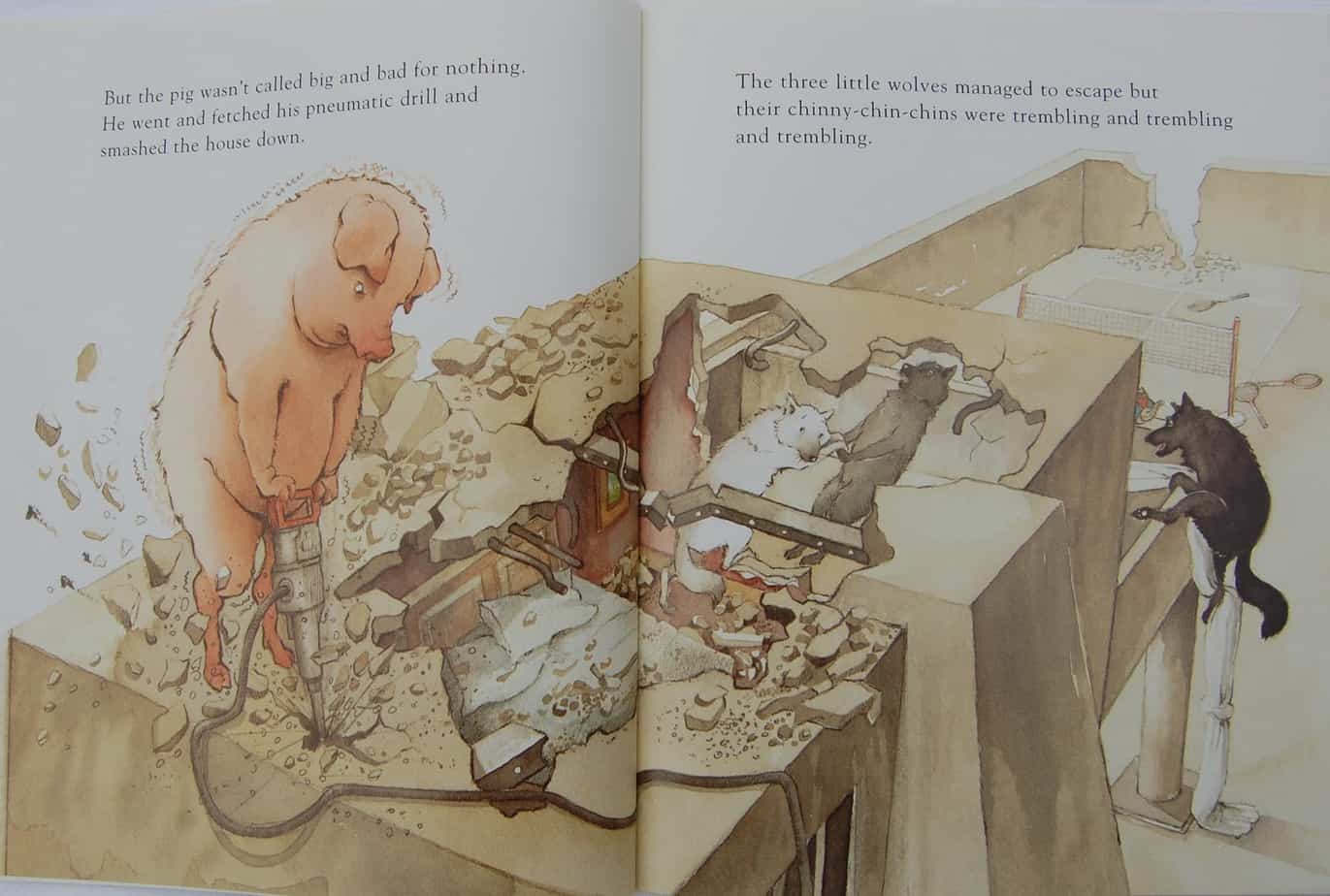
INVERTED MESSAGE
What’s the moral of the story in The Three Little Pigs? There are probably several, but the one I took from the story as a child was that one should always protect oneself from bad characters. The subtext is that bad characters are essentially bad — it is in their nature. Though what I’m about to say is most definitely an adult’s reading of this text, I’m very much reminded of the message that girls, in particular, get as soon as we start to ‘go out into the world’ ourselves: You must protect yourself from bad men. And if you don’t, well that’s your own fault really, isn’t it. Earlier versions of fairytales, including The Three Little Pigs, were influenced by The Harlot’s Progress plot. (Though the pigs are gendered male, children are lumped in with women when it comes to messages to protect yourself from baddies.)
This particular message has been getting a bit of media discussion recently due to the work on domestic violence by Australian of the Year Rosie Batty, and an increasing awareness of what’s now known as Rape Culture, and the victim blaming that happens with domestic assault. (“Why didn’t she just leave?”)
What I love about the message in this book is that we’re telling children the truth about bad characters. No matter what we do to protect ourselves, if someone with bad intentions really wants to harm us, there is nothing we can do to stop them. A rapist intent on raping, for instance, will rape no matter what. If you manage to stay away from that person, he will simply move on to someone else, so broad announcements to baton down the hatches (don’t get drunk, don’t wear skirts etc.) do nothing. And that’s what happens in this children’s book. Instead, the little wolves have to wait for the big, bad pig to come good. If only real life were this simple, however. The big, bad pig comes good due to The Redemptive Power Of Beauty. In picture books, or especially in fairytales, beauty equals goodness.
The other part of the inversion I like is that you can’t tell a baddie from looking at them. Though the big pig is depicted as menacing, we are nonetheless conditioned to read pigs as victims and wolves as perpetrators in storybooks.
HUMOUR IN THE ILLUSTRATIONS
Oxenbury must be well aware of the typical child’s reaction upon hearing that a mother is throwing her children out of home. What sort of mother would do that, I wondered as a child. (We set a very high bar for mothers in children’s literature, even when those mothers are animals.) In her illustration — if you look very closely — the adult reader, at least, will notice a few details which depict the mother wolf as a bit of a lush. She has rollers in her hair (and tail), she’s painting her nails nonchalantly even as she’s telling her children to get out, and there is a very small bottle of something hidden in the folds of her bed covers, where she is presumably having ‘hair of the dog’.
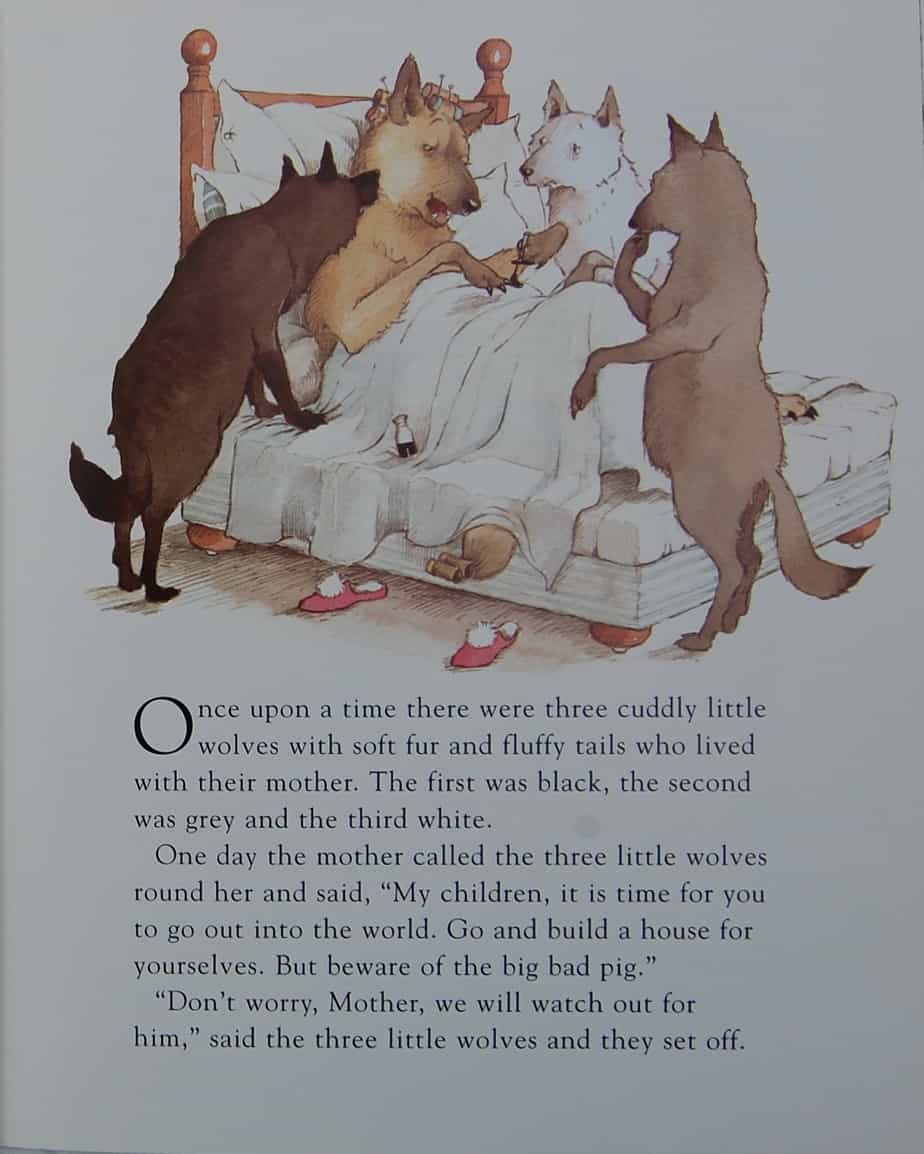
On the topic of female characters in this story, there’s no reason why the adult reader couldn’t read the three little wolves as female. This is unlikely to happen because there are no feminine markers either, except one of the little wolves is very taken with his/her precious teapot, and my own stereotyping has me casting this wolf as female.
I like that the kangaroo with the wheelbarrow full of bricks is female. She has to be, of course, if the artist is to include the most wonderful thing about kangaroos — the joeys in their pouch. I like to think that the kangaroo construction worker would have been coded female even without the cute little joey in her pouch. Let’s have more of that in picture books!
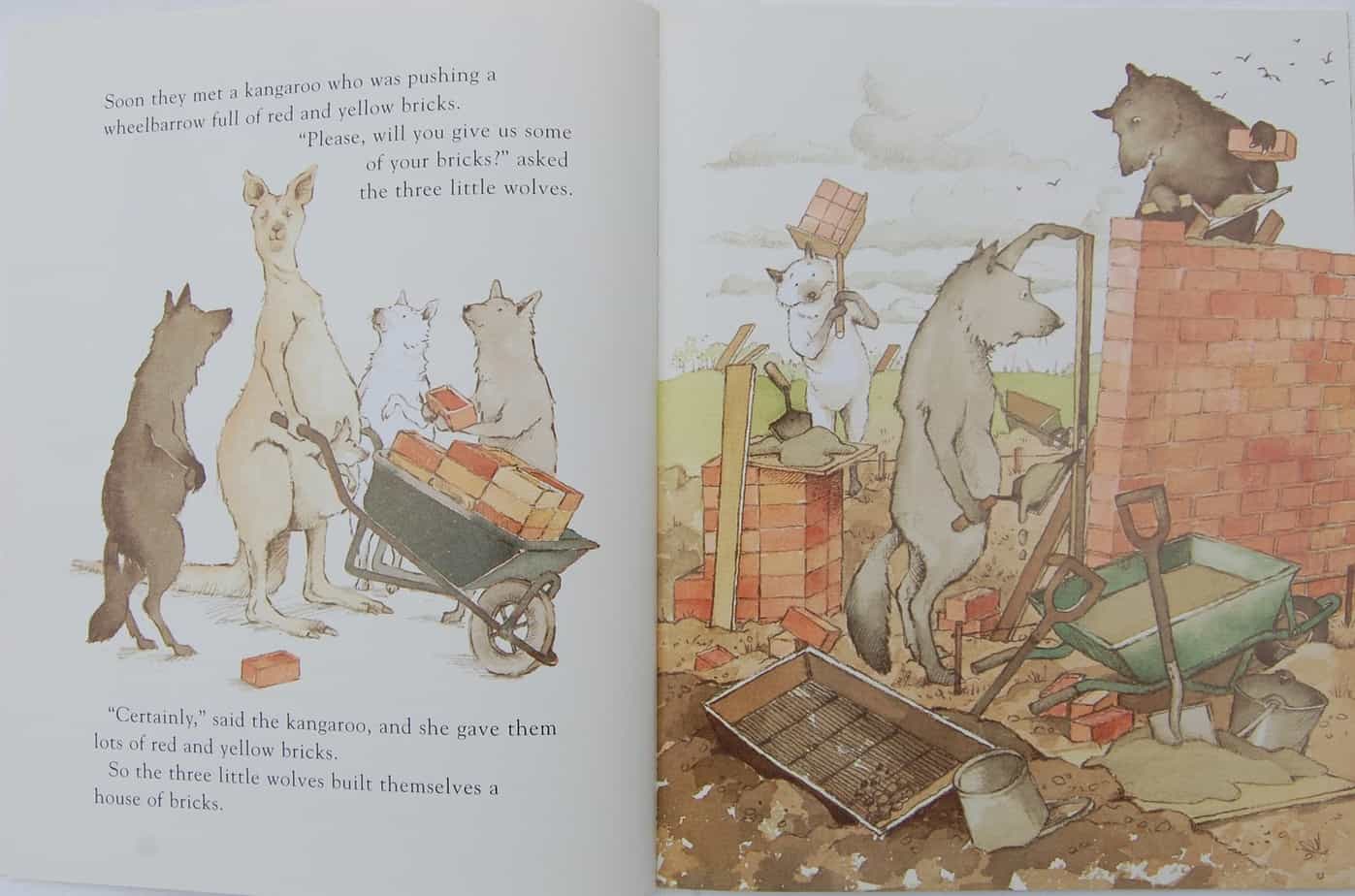
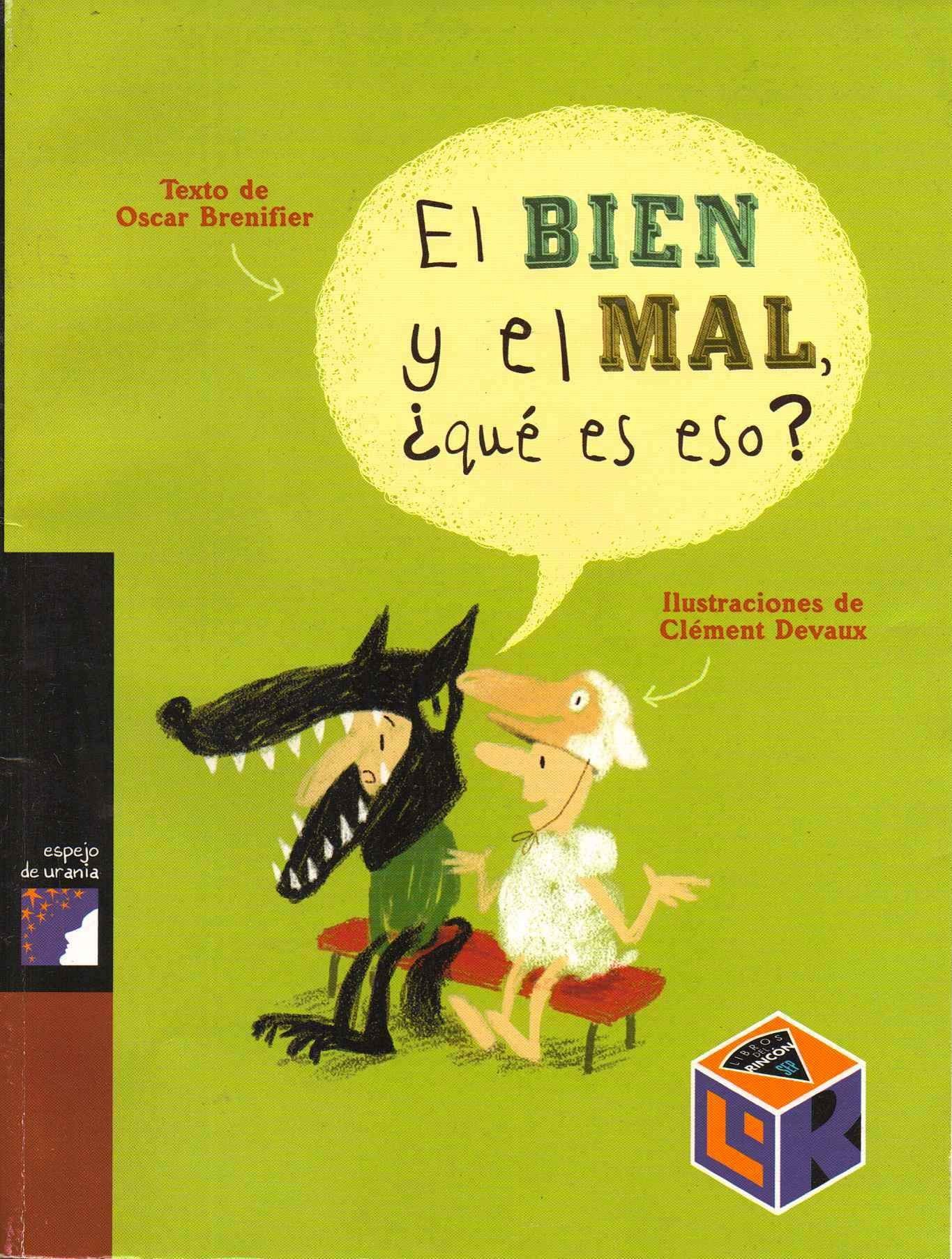
ANOTHER BOOKISH SUBVERSION INVOLVING BRICKS

